- Home
- Zadie Smith
Feel Free Page 41
Feel Free Read online
Page 41
and the I-It attitude 383–4, 385, 389–90, 393
and the I-Thou relationship 383–5, 386–8, 390–91, 393
meeting the other 381–93
the radically other 385
parenting 357–60, 362–4
Paul, Sean 317
Peele, Jordan 75, 76–7, 78, 79–82, 83, 84, 89, 91–2, 94, 97, 213, 215, 223
Get Out 212–16, 217, 222–3
Key partnership see Key & Peele
Peretti, Chelsea 94
pleasure 51–2, 108, 126, 176–7, 185, 239, 289
aesthetic 192
and joy 427–30, 432 see also joy
Polar Express 4-D Experience, The 117–19
Prince (Prince Rogers Nelson) 141–2
puppets 81, 117, 120–22, 126, 128, 129–30
see also Anomalisa (Kaufman film)
race/racism
and appropriation 217
biracialism 75, 83–4, 87, 90–91, 218–20, 222, 318
Black Lives Matter movement 186
blacks, whites, and America as one people 212–23
Mark Bradford on the black community 185–6
Brexit and casual racism 25–6
changing white perception of a black person 216–17
“color-blindness” 240
color consciousness 315
Key & Peele’s racial comedy and background 82–3, 86–96
and Kureishi’s The Buddha of Suburbia 240–43
and Peele’s Get Out 212–16, 217, 222–3
racial homogeneity 35–7
racial obsession 24
Senna’s humorous stories on race 318–19
rap 64–73, 200
see also hip hop
religion
and the environment 16
and science 258–63
Reznor, Trent 49
Rhodes-Pitts, Sharifa: Harlem Is Nowhere 251–5
Rhys, Jean 144
Rimbaud, (Jean Nicolas) Arthur 330–32
Robinson, Bill “Bojangles” 138–9
Rogers, Ginger 137
Rome 399–405, 406–9, 412–13, 415–18
Ross, Rick 68
Roth, Philip 242, 247, 337–9, 344, 345, 347
Portnoy’s Complaint 337–8, 340, 341, 345
Rothko, Mark 371–2
Saatchi, Charles, “Sensation” exhibition 194, 197
Sackville-West, Vita 290
St Aubyn, Edward (“Teddy’) 302
At Last and the Melrose novels 301–11
Salmon, Valerie 313
Sandy, Superstorm 17
Saunders, George 138
Saville, Jenny 194
schools 20–22
in special measures 20, 32
Schopenhauer, Arthur 118, 119, 124–5, 126, 128–9, 130n, 131
and compassion 134, 135
and the will 122, 127, 129, 132–3, 135
science
Darwinian 259–61, 263
and magic 259–62
and religion 258–63
seasons, English 14–19
Seinfeld, Jerry 297, 362
Sellers, Peter 77, 80
Seneca 324
On the Shortness of Life 107, 108
Senna, Danzy 318–21
“Sensation” exhibition 194, 197
Shakespeare, William 328, 333–4
Measure for Measure 249–50
Shakur, Tupac 65, 66, 69
Shaw, George Bernard 315
Shawn Carter Scholarship Foundation 72
Shutz, Dana 219
Open Casket 218–22
Sickert, Walter 193
Signorelli, Luca: Man Carrying Corpse on His Shoulders 367, 368–9, 376–7
Simmons, Russell 71
Smith, Cauleen 221
Smith, Harvey (father) 39–40, 161, 175–6, 354, 355, 361–3, 365, 394–6, 397–9, 402–5
Smith, Yvonne, née Bailey (mother) 25–6, 40, 160–61, 346, 354, 355, 359, 360, 362, 363
Smith, Zadie
On Beauty 334–6
NW 248–50
Swing Time 346
Social Network, The 46–52, 53, 57, 62–3
Socrates 389, 391–2
software, networking 46, 52, 56–7, 60, 62
SoHo, Manhattan 420–26
Sontag, Susan 284, 287
Against Interpretation 158
In America 287
memoir by Nunez: Sempre Susan 300
“On Style” 196
Sorkin, Aaron: The Social Network 46–52, 53, 57, 62–3
Spark, Muriel 144
Spielberg, Steven 209–10
Spira, Robert 290
Stamm, Peter: Seven Years 271–7
Storr, Robert 189–90
Swammerdam, Jan 299
Sze, Sarah: Centrifuge 201–11, 202
Talking Heads 109
Taylor, Henry 221
technology 61, 70, 209–10, 232–3, 235
Thewlis, David 123, 131
Thomson, Ian: The Dead Yard 312–18
Till, Emmett 218, 219, 221
Timberlake, Justin 49
Tintern Abbey 103–4
Titian
Ranuccio Farnese 375
Venus of Urbino 175–6, 179
toilets 355
Tolstoy, Leo 146
Tomei, Marisa 154
Tory–Lib Dem coalition 9
Toussaint, Jean-Philippe 61
Trump, Donald 35
UKIP 26
Van Der Zee, James 254
Vandross, Luther 145
Venice 409–11, 414–15
Verlaine, Paul 330
Walken, Christopher 153
Wallace, David Foster 278
Walsh, Patricia 92
Warhol, Andy 372–5, 376
Washington, Denzel 154
Welles, Orson 153, 156
Wells, H. G. 261
Werff, Adriaen van der 178
West, Kanye: Watch the Throne (with Jay-Z) 69–71
West, Rebecca 287, 288–9
will 122–35
Willesden Green, London 3–8, 11
bookshop 5–8, 13
French Market 3–4
Library Centre 3, 4, 6, 7–8, 12, 13
Williams, Lucinda 90–91
Wilson, Owen 153–4, 156
Wilson, Phil 32
Woolf, Virginia 139–40, 193, 253, 290
diaries 352
Wordsworth, William 103–4
world-weariness (Weltshmerz) 124–7
Yates, Richard 278, 279, 347
Yiadom-Boakye, Lynette 187–200
Mercy over Matter 200
“Plans of the Night” 197–8
“Under-song for a Cipher” 200
Zadak, Joel 79, 96–7, 98
Zong (slave ship) 313–14
Zuccotti Park 71
Zuckerberg, Mark 45, 50, 52–4, 55, 57, 58, 59, 61, 62
The Social Network portrayal 46–8, 49–52
Zuk, Marlene: Sex on Six Legs 295–9
ABOUT THE AUTHOR
Zadie Smith is the author of the novels White Teeth, The Autograph Man, On Beauty, NW, and Swing Time, as well as a collection of essays, Changing My Mind.
What’s next on
your reading list?
Discover your next
great read!
* * *
Get personalized book picks and up-to-date news about this author.
Sign up now.
*Farage believes that the Arctic Sea ice cap is growing back and that reports of its disappearance are deliberate overstateme
nt, forged in conspiracy by Green activists in cahoots, naturally, with “EU federalists.” He thinks that the strict gun laws put in place after the massacre at Dunblane should be repealed, and he feels that the “basic principle” of Enoch Powell’s “rivers of blood” speech—in which he said the proposed immigration and antidiscrimination legislation would lead to violence—was correct.
*Jonathan Freedland, “The Young Put Jeremy Corbyn In, but He Betrayed Them over Brexit,” Guardian, 27 June 2016.
*This essay is the text of a talk I gave in Berlin on 10 November on receiving the 2016 Welt Literature Prize.
*See “Small Change: Why the Revolution Will Not Be Tweeted,” New Yorker, 4 October 2010.
*See Jose Antonio Vargas, “The Face of Facebook: Mark Zuckerberg Opens Up,” New Yorker, 20 September 2010.
*Lanier: “Individual web pages as they first appeared in the early nineties had the flavor of personhood. MySpace preserved some of that flavor, though a process of regularized formatting had begun. Facebook went further, organizing people into multiple-choice identities, while Wikipedia seeks to erase point of view entirely.”
*Perhaps the reason why there has not been more resistance to social networking among older people is because 1.0 people do not use Web 2.0 software in the way 2.0 people do. An analogous situation can be found in the way the two generations use cell phones. For me, text messaging is simply a new medium for an old form of communication: I write to my friends in heavily punctuated, fully expressive, standard English sentences—and they write back to me in the same way. Text-speak is unknown between us. Our relationship with the English language predates our relationships with our phones.
*This essay appeared in the 6 September 2012 edition of The New York Times magazine.
*Schopenhauer argued that a mild form of boredom could be detected in some domesticated dogs and cats.
*We learn that Bella, too, struggles with gravity—“I have a fake tooth in the front because I fell and hit a cement bench with my mouth”—and perhaps this is where comedy and Schopenhauer meet, somewhere in the tragicomic inevitability of the pratfall.
*In accounting for the impact of Lisa’s simple rendition we might turn to Schopenhauer explaining the power of folk songs: “Everything superfluous is prejudicial.”
*Schopenhauer—though he wrote so poisonously of women, hated his own mother and famously pushed his landlady down the stairs—also argued that women tend toward compassion more consistently than men.
*It’s up for Best Animated Feature, with Shaun the Sheep and Inside Out.
*The lyrics of the “flower duet” can be read as a transcendental merging of the many into the one: “Thick dome of jasmine/Under the dense canopy where the white jasmine/Blends with the rose . . ./Come, let us drift down together.”
*Sotheby’s Magazine asked me to write on the first piece of art I ever owned. I wanted to lie but ended up telling the (shameful) truth.
*I was asked to write an introductory essay for a book of Billie Holiday photos. I did try to write an essay about Billie, but every angle seemed too formal or cold. In the end, I opted for some form of ventriloquy instead.
*“On Exactitude in Science,” Jorge Luis Borges, translated by Andrew Hurley.
*And I later put this detail in a novel.
*I feel I must mention that I’m not in the habit of sitting around wondering about my novels after I’ve written them. The question was put by the Guardian, and this piece part of a series in which writers reflect on the roots and inspirations behind a particular work.
*I was in Northern Ireland at my in-laws’ watching television when my phone rang. It was New York, a girl from Harper’s magazine, Gemma Sieff. She asked if I had any interest in reviewing books. I had a four-month-old baby and a misplaced idea of maternal bravado. I said yes. I lasted six months.
*The Duchess unfortunately left us on 24 September 2014.
*This lecture was the Inaugural Philip Roth Lecture, given at the Newark Public Library on 27 October 2016.
*My mother, who still lives in that maisonette—with all our old rooms rented out—is very fond of toilets: not long ago she put a third one into what is essentially a cupboard in her bedroom. As all her children know well, Yvonne never tires of talking toilets; it’s a preoccupation that stretches back to her childhood, in Jamaica, where she had to use a hole in the ground. She rarely comes home from a holiday without a photograph of the local facilities: drop toilets in Ghana, sparklingly clean toilets in Port Verde, supersonic toilets in Japan . . .
*If you were on the left.
*My brother Ben suggests this was a “money plant,” which is neat, thematically.
*After my father died I found his earlier, commercial work among his things—mainly pictures of catalogue models of the fifties and sixties—as well as a trove of family photographs that turned out to be far more interesting than I had ever given them credit for being, as a child. My favorite is a family scene. It features Harvey himself, his first wife, Blanche, and his eldest daughter, my half-sister, Diana, to whom, by all accounts, he was a far less effective father: emotionally remote, and often simply not there. I reproduce the photo on page 365. I note its many encroaching shadows and the dramatic battle of the light as it tries to escape this creeping darkness. I note the many enclosing frames and awkward angles; the mixture of the natural and the staged; the contrast of the warm and the cold. He never gave the photo a title; it would never have occurred to him to do so. But I have taken the liberty of giving it one.
*In a crypt in Rome the bones of some four thousand Capuchin monks, buried between 1500 and 1870, have been used to create mise en scènes: fully dressed skeletons praying in rooms made of bones, with bone chandeliers and bone chairs and ornamental walls covered in skulls. In the final room a memento mori is spelled out upon the floor: “What you are now, we once were; what we are now, you shall be.”
*Bieber and Buber are alternative spellings of the same German surname. Who am I to ignore these hints from the universe?
*To use the most commonly cited examples.
*Dear Reader—will you google them? Originally, they were included in the essay but it turns out that reproducing lyrics is incredibly expensive.
* It’s also a spookily accurate definition of much of our online lives, seventy years before the Internet existed.
*Taken from a series of Bieber’s texts to Gomez, leaked and posted to the Internet.

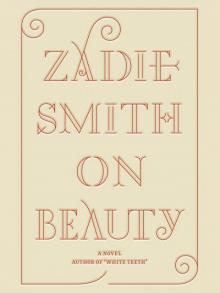 On Beauty
On Beauty Nw
Nw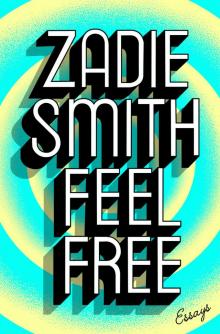 Feel Free: Essays
Feel Free: Essays The Book of Other People
The Book of Other People White Teeth
White Teeth Changing My Mind: Occasional Essays
Changing My Mind: Occasional Essays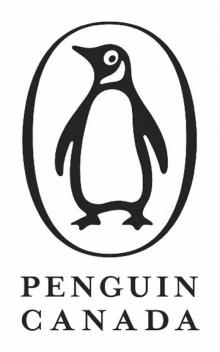 N.W.
N.W. Swing Time
Swing Time The Embassy of Cambodia
The Embassy of Cambodia The Autograph Man
The Autograph Man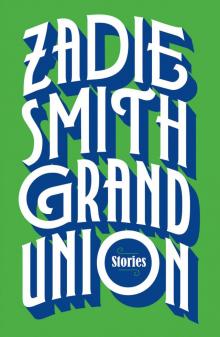 Grand Union
Grand Union Intimations
Intimations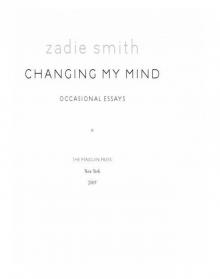 Changing My Mind
Changing My Mind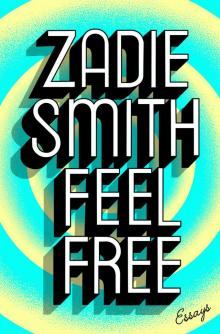 Feel Free
Feel Free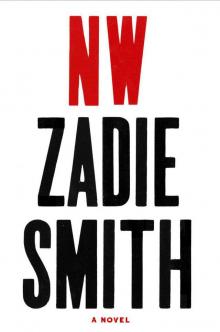 NW: A Novel
NW: A Novel